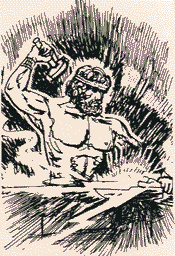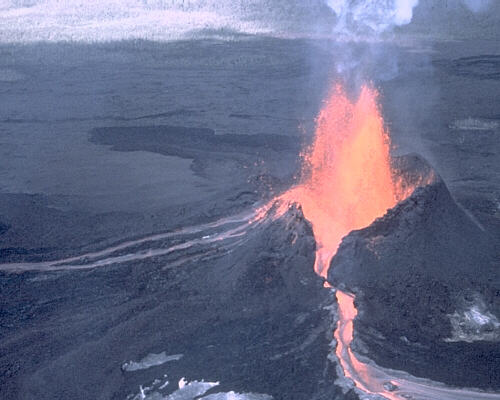Magma is the name given to liquid or molten rock that forms within the mantle. This molten rock is less dense than the surrounding solid rock. This decreased density, along with gas pressure, forces the molten rock to rise up through areas of weakness and breaks in the Earth’s crust. Often this magma collects in a large reservoir below the Earth’s surface called a magma chamber. When this magma erupts on to the Earth’s surface it is called lava.
The opening in the crust through which molten rock flows is called a vent. Prolonged, repeated, or very large lava flows, along with other ejections of rock and ash fragments result in an elevated structure being built up around the vent. This structure containing a vent or more vents that is formed by magma from deep within the Earth is called a volcano. The funnel-shaped depression at the top of most volcanoes is known as a crater.

The Volcanic Seven Summits
The volcanic seven summits is a list that consists of the highest volcano on each of the Earth’s seven continents.
- Click on each volcano name in order to visit it. (Note that Australia is considered to be part of Oceania.)
| Volcano | Continent | Elevation |
| Mt. Kilimanjaro | Africa | 5,895 m (19,340 ft) |
| Mt. Sidley | Antarctica | 4,285 m (14,060 ft) |
| Mt. Giluwe | Oceania | 4,368 m (14,330 ft) |
| Mt. Damavand | Asia | 5,610 (18,410 ft) |
| Mt. Elbrus | Europe | 5,642 m (18,510 ft) |
| Pico de Orizaba | North America | 5,636 m (18,490 ft) |
| Ojas del Salado | South America | 6,893 m (22,610 ft) |
- What is the highest volcano in the world?
The highest volcano in the world is Ojas del Salado in South America.
- Compare this list of the highest volcanoes with the list of the Seven Summits (the highest mountain on each continent.) in lesson A1-6 (i.e. Try This – The Seven Summits).
- Which mountains are on both the Seven Summits list and the Volcanic Seven Summits list?
Mt. Kilimanjaro (Africa) and Mt. Elbrus (Europe) are on both lists.

